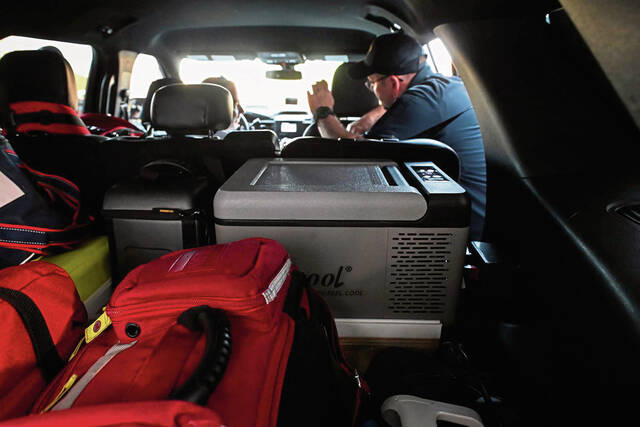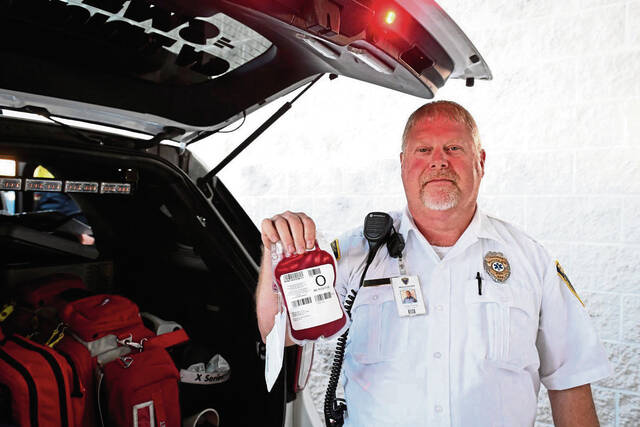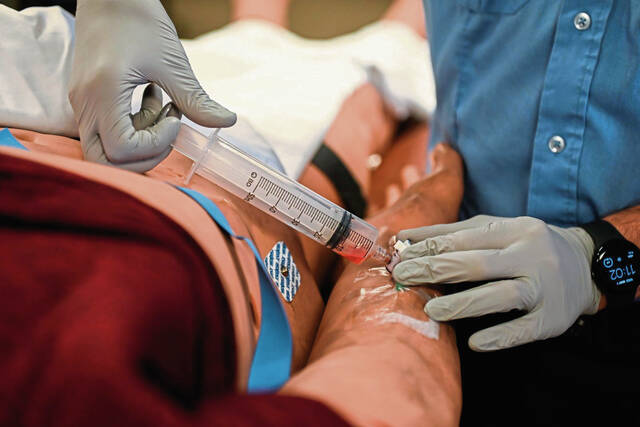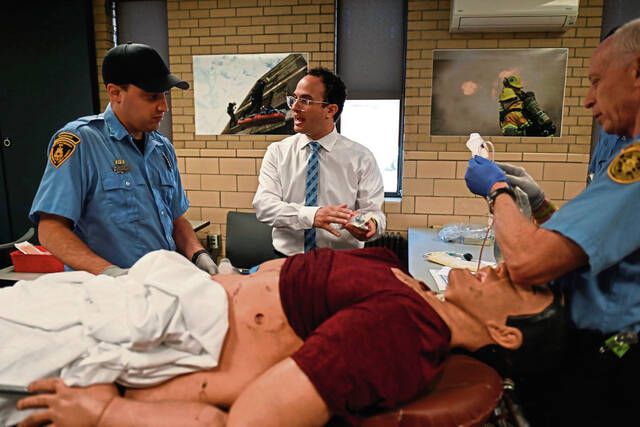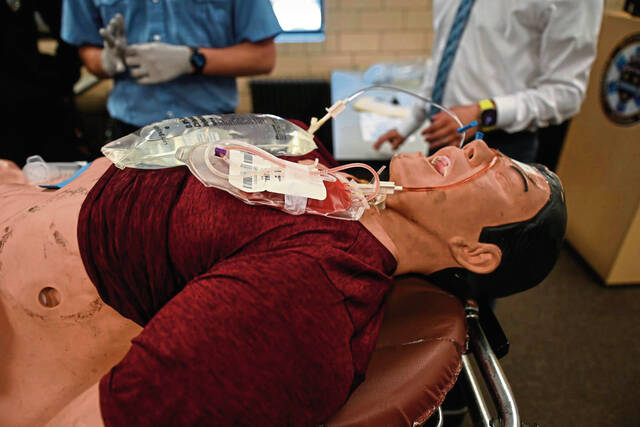Mutual Aid EMS follows Pittsburgh's lead to provide blood at trauma scenes
Mutual Aid EMS this week added a lifesaving tool to its emergency response — blood.
Dr. Bill Jenkins, the Greensburg-based ambulance service’s medical director, said it will help paramedics better care for patients who are in hemorrhagic shock from some type of trauma, such as a gunshot wound or vehicle crash, or another issue, such as childbirth, before they get to a hospital.
“The quicker you can get blood into a patient … the more beneficial that patient’s outcome will be,” he said.
Paramedics picked up the first two bags of Type O blood, a universal type, Thursday morning from Independence Health Westmoreland Hospital, making Mutual Aid the first in the county to have it available on ambulance calls.
Two district chief vehicles have been outfitted with small refrigerators to store the blood.
Those district chiefs have access to a smartphone app that tells them if the temperature is fluctuating outside of safe ranges. For now, there will be one unit of blood in each of the two vehicles, which are not ambulances, but Jenkins said the amount could increase in the future.
“We don’t know how much we’re going to actually need yet,” he said.
District Chief Will Thomas said paramedics in his position cover specific areas and are able to be dispatched to calls, acting as roving in-field supervisors. They respond to more serious situations and can be requested by ambulance crews, if necessary.
He expects having blood available to be a game-changer.
“It’s going to help save a lot more lives,” he said. “Especially in the rural areas where you’re a lot farther from the hospital.”
In Allegheny County, Pittsburgh EMS is working to expand the pilot blood program it launched in 2023. A recent state Department of Health change in scope-of-practice guidelines green-lighted EMS units throughout Pennsylvania to carry and administer blood.
Two UPMC hospitals will provide paramedics with the blood supply, and other operating costs are minimal, Pittsburgh EMS officials said.
One of the service’s two rescue-unit ambulances will store the blood during shifts in a military-grade cooler; when the cooler loses power, its battery can keep the blood cool for up to 72 hours. A grant helped the group buy the $10,000 cooler.
EMS providers typically use IV fluids as a substitute for blood when a patient is in hemorrhagic shock, Jenkins said, but hospitals over the past decade have been shifting to giving patients blood sooner during the care process. Jenkins also is the director of the emergency department at Independence Health Frick Hospital in Mt. Pleasant.
A blood product provides what a patient needs when they’re losing blood, rather than IV fluids, Thomas and Jenkins agreed.
“Blood’s the ultimate,” Thomas said.
Hemorrhaging from a traumatic injury — in short, losing so much blood that body tissue isn’t replenished with enough oxygen — is the leading cause of death for Americans ages 1 to 46, according to the National Institutes of Health.
“In 2023, physicians had to be on scene,” said Pittsburgh EMS Assistant Chief Mark Pinchalk. “Now, the paramedics will be able to (administer blood). It’s going to make it logistically easier to get blood to the people.”
Mutual Aid is the designated ambulance service for 33 municipalities — 27 in Westmoreland and five in Fayette. The partnership with Westmoreland Hospital in Greensburg, which will be the source of Mutual Aid’s blood, helps the ambulance service expand its scope of caring for critical patients, Jenkins said.
Also key is the training 90 paramedics got leading up to Thursday’s launch.
“There’s a lot of logistics to it,” he said. “This has been six months in the making.”
Paramedics learned about what to look for in patients undergoing hemorrhagic shock and worked hands-on with equipment. They’ll replenish the in-vehicle stock as needed and return blood units within seven days of expiration to the hospital so it can be used there, Jenkins said.
Blood is good for 42 days in a bag.
“We have a commitment to this program to never waste any blood,” Jenkins said.
Since the program has been in the works, there has been about one call a month during which Jenkins said blood could have been used. Thomas remembered a call last month involving a pediatric patient where having access to blood would have been helpful.
Mutual Aid plans to share with other area ambulance services that might need it — as long as a district chief carrying the blood can get to the scene, Jenkins said. The program will benefit the whole county.
“You want to keep these people alive,” Thomas said.
Renatta Signorini is a TribLive reporter covering breaking news, crime, courts and Jeannette. She has been working at the Trib since 2005. She can be reached at rsignorini@triblive.com.
Remove the ads from your TribLIVE reading experience but still support the journalists who create the content with TribLIVE Ad-Free.


